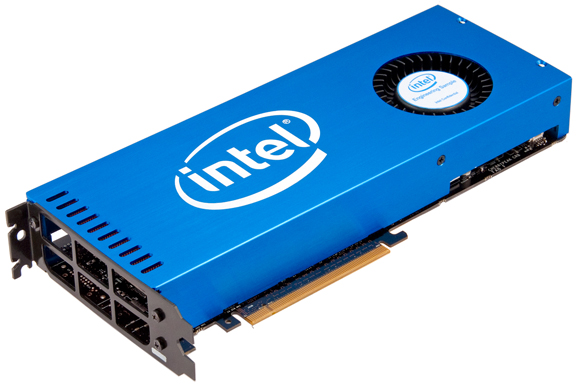Latest News
December 27, 2011
CPU maker Intel‘s new architecture, dubbed Knights Corner, represents the move from multicore (two, four, six, eight …) to many integrated cores (MIC, more than 50 Intel processing cores on a single chip).
Intel describes MIC as a coprocessor, a power-booster to the central processor. The new product is expected to be a serious contender in the high performance computing (HPC) market, where graphics coprocessors (GPUs) have been grabbing market shares because of their parallel computing capability. What distinguishes Intel’s MIC from graphics coprocessors may be its programming environment.
“Developers can program these cores using standard C, C++, and FORTRAN source code,” according to Intel. “The same program source code written for Intel MIC products can be compiled and run on a standard Intel Xeon processor. Familiar programming models remove developer-training barriers, allowing the developer to focus on the problems rather than software engineering.”
Taking advantage of GPU-powered parallel computing depends on GPU-specific language (for example, CUDA for NVIDIA GPUs). Intel’s calculation is, the ease of use with which its Knights Corner processors can be programmed will make them easier to deploy for highly parallel code. For engineers and designers, Intel’s MIC may lead to better performance in CPU-based ray-traced rendering and FEA/CFD simulation.
Intel announces, “The first presentation of the first silicon of Knights Corner coprocessor showed that Intel architecture is capable of delivering more than 1 TFLOPs of double precision floating point performance (as measured by the Double-precision, General Matrix-Matrix multiplication benchmark).”
At the International Supercomputing Conference 2011 in Hamburg, Germany, Intel declared its goal to deliver Exascale-level performance by 2018 with only two times the power usage of the current top supercomputer. It appears Knights Corner will pave the way in Intel’s lofty performance quest.
Subscribe to our FREE magazine, FREE email newsletters or both!
Latest News
About the Author
Kenneth Wong is Digital Engineering’s resident blogger and senior editor. Email him at [email protected] or share your thoughts on this article at digitaleng.news/facebook.
Follow DE






